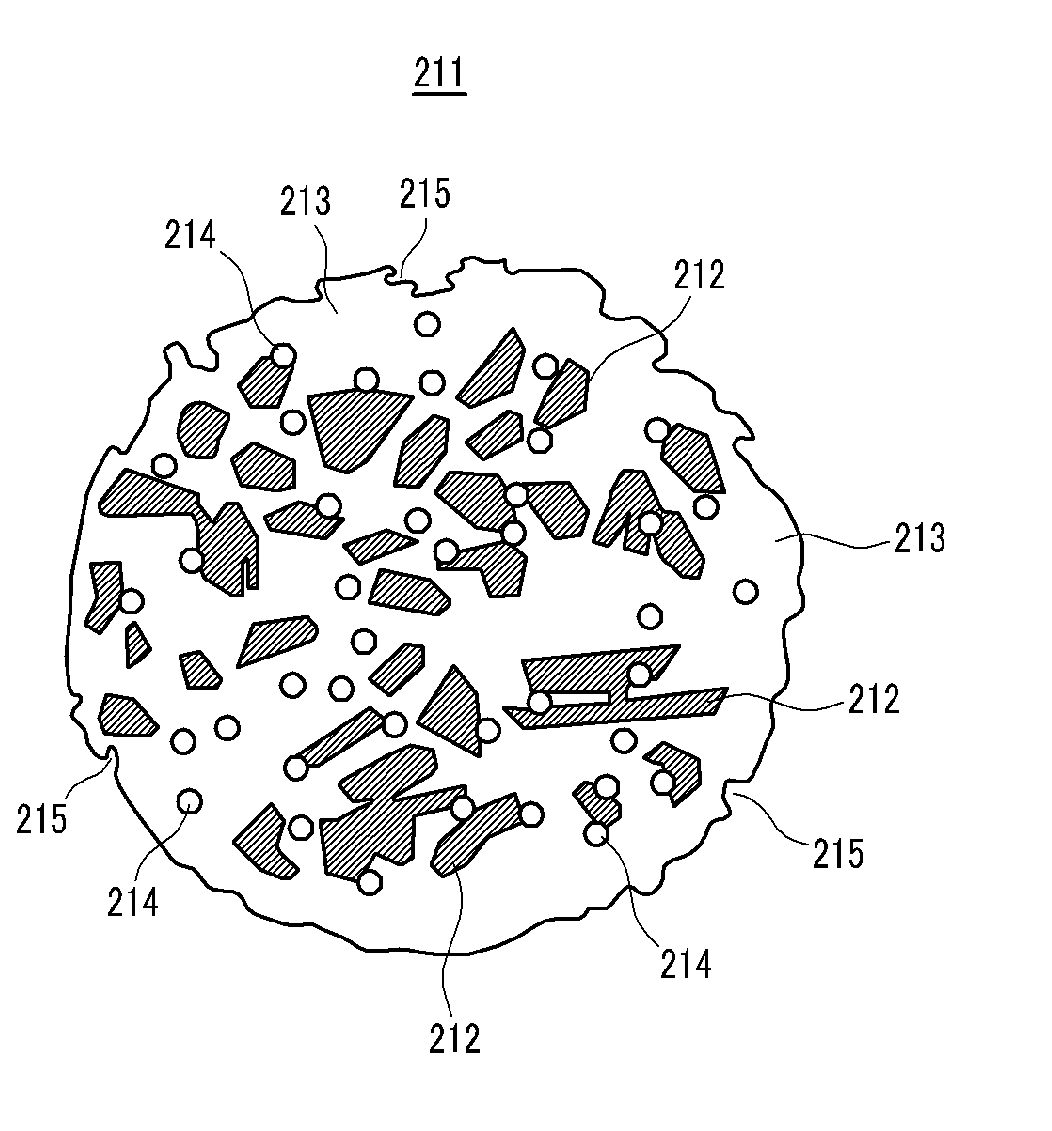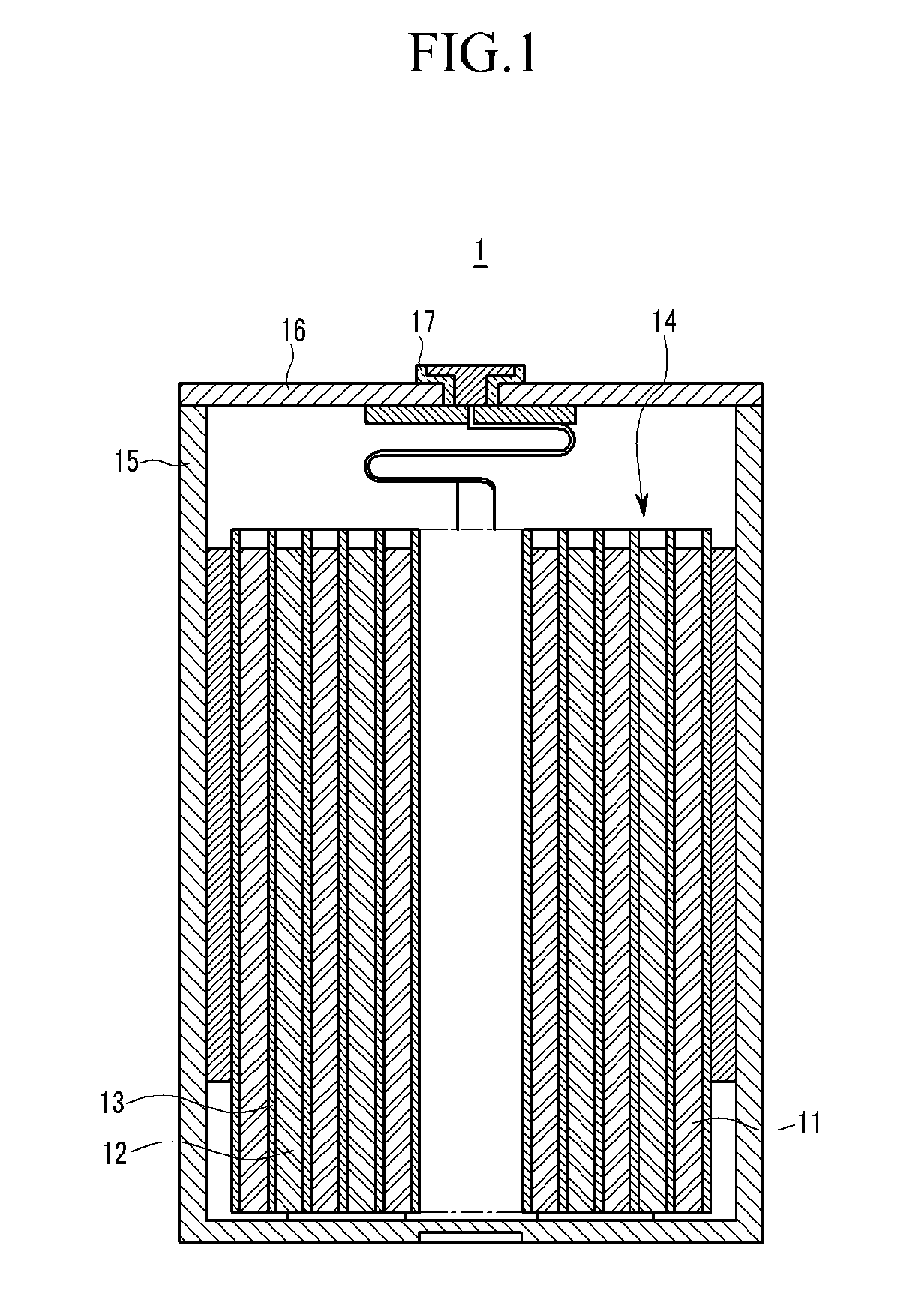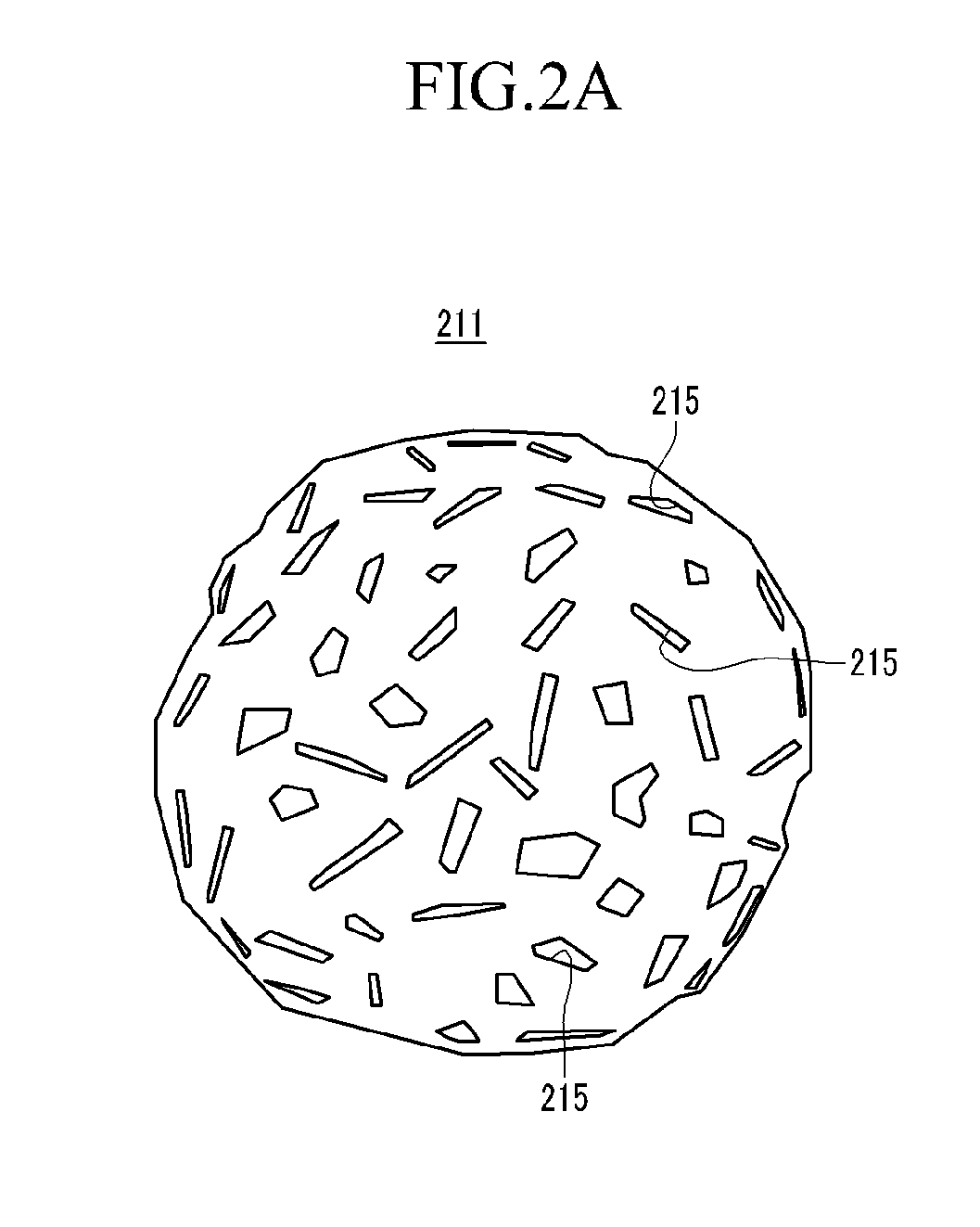Rechargeable lithium battery and method for manufacturing the same
a rechargeable lithium battery and battery technology, applied in the manufacture of final products, cell components, electrochemical generators, etc., can solve the problems of less charge and discharge, less lithium ions, and failure to acquire rechargeable lithium batteries with high-capacity
- Summary
- Abstract
- Description
- Claims
- Application Information
AI Technical Summary
Benefits of technology
Problems solved by technology
Method used
Image
Examples
example 1
[0102] Polyvinylidene fluoride is dissolved in N-methylpyrrolidone to prepare 50% concentration of a solution, and then LiCoO2 and carbon black were added to the solution to prepare a slurry. The slurry was coated on an Al foil, dried and then cut to a suitable size to fabricate a positive electrode. Theoretical charge and discharge capacity of the positive electrode was 140 mAh / g.
[0103] Polyvinylidene fluoride is dissolved in N-methylpyrrolidone to prepare 50% concentration of a solution, and then graphite and Li3V2(PO4)3 were added to the solution to prepare a slurry. The slurry was coated on a Cu foil, dried and then cut to a suitable size to fabricate a negative electrode.
[0104] Li3V2(PO4)3 was added in an amount of 10 mass % based on the mass of the graphite. Theoretical charge and discharge capacity of the negative electrode was 330 mAh / g, and electrical capacity of Li3V2(PO4)3 is 120 mAh / g.
[0105] Between the negative electrode and the positive electrode, a separator of pol...
example 2
[0106] A cell was fabricated in accordance with the same procedure as in Example 1 except that Li2CuO2 was added instead of Li3V2(PO4)3. The Li2CuO2 was added in an amount of 10 mass % based on the mass of the graphite. Theoretical charge and discharge capacity of the negative electrode was 330 mAh / g, and electrical capacity of Li2CuO2 is 110 mAh / g. Theoretical charge and discharge capacity of the positive electrode was 140 mAh / g.
PUM
| Property | Measurement | Unit |
|---|---|---|
| voltage | aaaaa | aaaaa |
| voltage | aaaaa | aaaaa |
| particle diameter | aaaaa | aaaaa |
Abstract
Description
Claims
Application Information
 Login to View More
Login to View More - R&D
- Intellectual Property
- Life Sciences
- Materials
- Tech Scout
- Unparalleled Data Quality
- Higher Quality Content
- 60% Fewer Hallucinations
Browse by: Latest US Patents, China's latest patents, Technical Efficacy Thesaurus, Application Domain, Technology Topic, Popular Technical Reports.
© 2025 PatSnap. All rights reserved.Legal|Privacy policy|Modern Slavery Act Transparency Statement|Sitemap|About US| Contact US: help@patsnap.com



